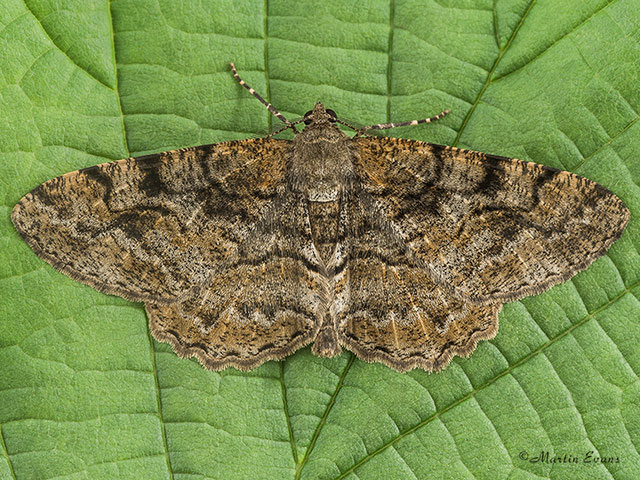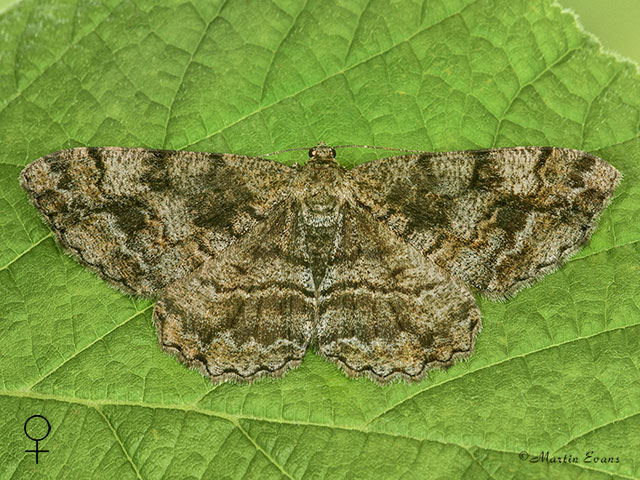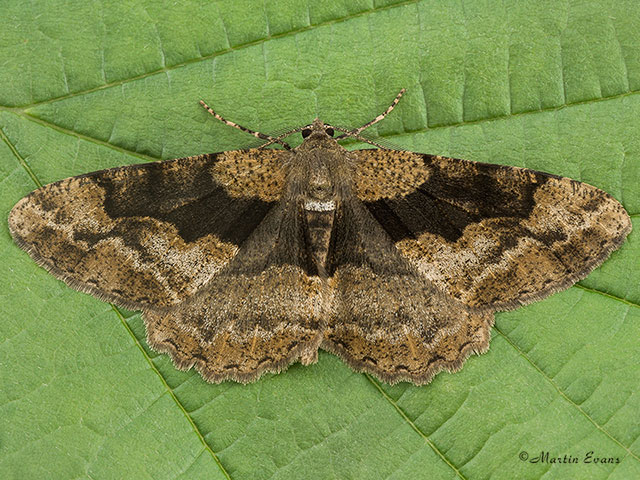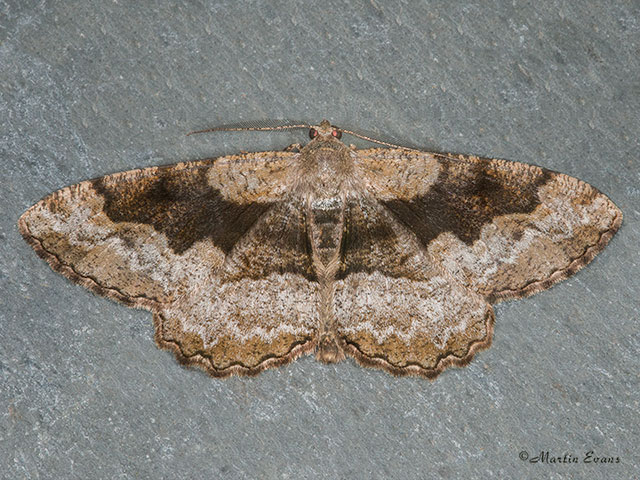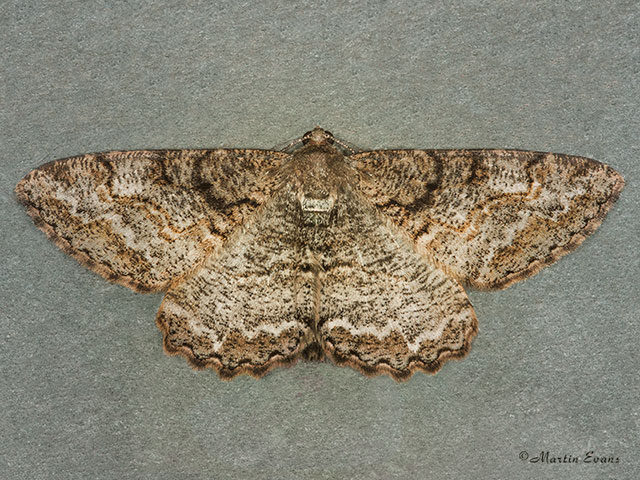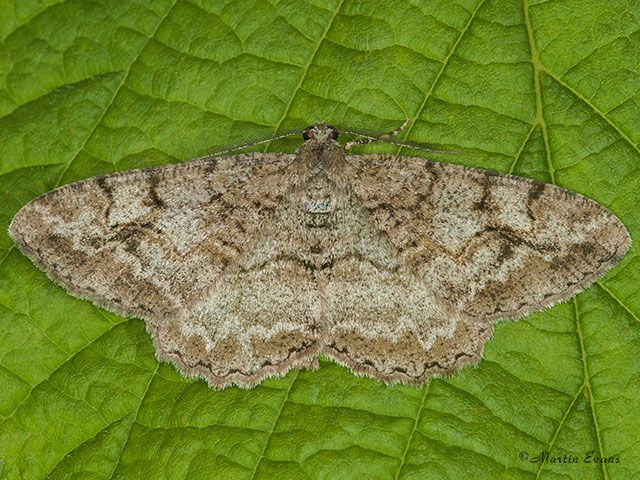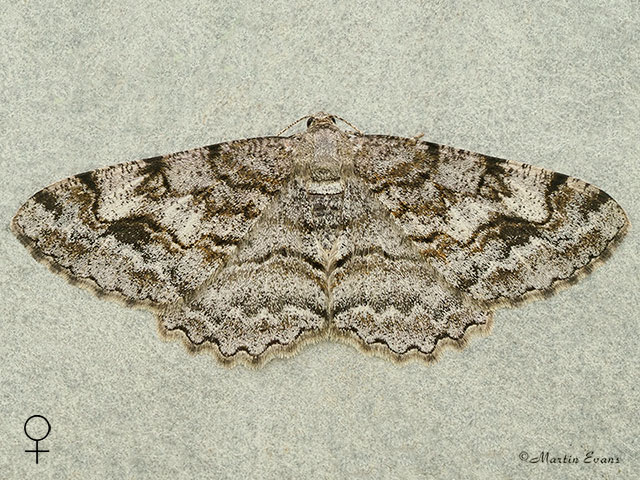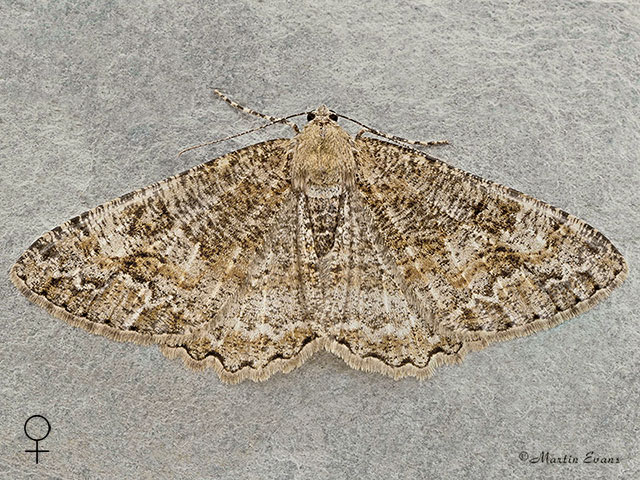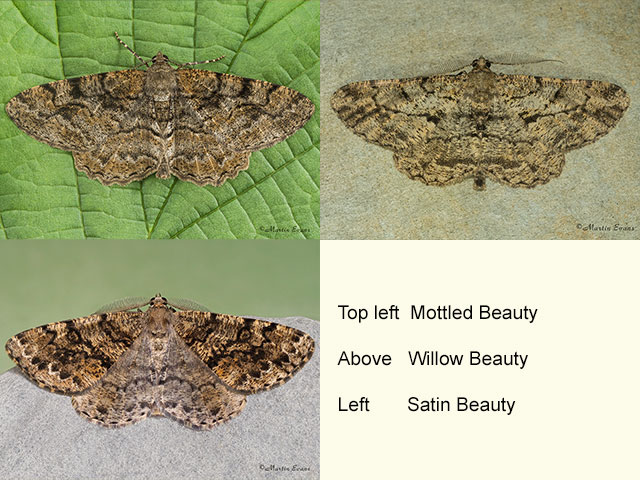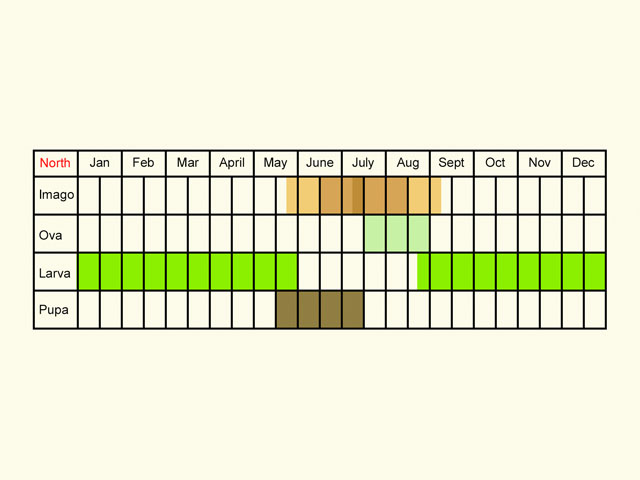Geometridae
70.265 Mottled Beauty Alcis repandata repandata (Linnaeus, 1758)
Common throughout
Alcis repandata muraria Curtis, 1826. Scotland
Alcis repandata sodorensium (Weir, 1881). Outer Hebrides
Similar species: Willow Beauty Peribatodes rhomboidaria has broader antennae and a ragged outer central cross-line that slopes inward to the trailing edge where it meets the central cross-line. Satin Beauty Deileptenia ribeata has broader antennae, a more rounded forewing and a ragged outer central cross-line that slopes inward to the trailing edge where it meets the central cross-line.
The rare migrant Olive-tree Beauty Peribatodes umbraria has a whitish background colour and a large dark blotch between the central cross-line and the outer central cross-line where they meet at the trailing edge. The now rare migrant Feathered Beauty Peribatodes secundaria has broader antennae and the forewing outer cross-line bows outwards before it meets the central cross-line at the trailing edge. The rare migrant Lydd Beauty Peribatodes ilicaria has broader antennae, the outer edge of the hindwings are less scalloped, the forewing outer cross-line bows outwards before it meets the central cross-line at the trailing edge and a pale square on the underside of the wing tip may be present.
Forewing: 19 to 26mm
Habitats: Woodland, moorland and carr. Also heathland, scrub, hedgerows, calcareous scrub grassland, parkland and gardens.
Habits: The moth is sometimes disturbed from rest on tree trunks during the day. It nectars at flowers and comes to light.
Foodplant: The larva feeds on oaks, Ash, Downy Birch, Silver Birch, Blackthorn, Hawthorn, Midland Hawthorn, Bramble, Honeysuckle, Barberry, Broom, Bilberry, Heather, Juniper, Norway Spruce, Lawson's Cypress, Japanese Red-cedar, Western Hemlock, docks, Yarrow, Wild Angelica, St John's-worts and probably many other woody and herbaceous plants. It pupates in a flimsy cocoon in the leaf litter.
On the European mainland it has also been recorded feeding on Hornbeam, Aspen, Alder, Blackthorn and Honeysuckle.
